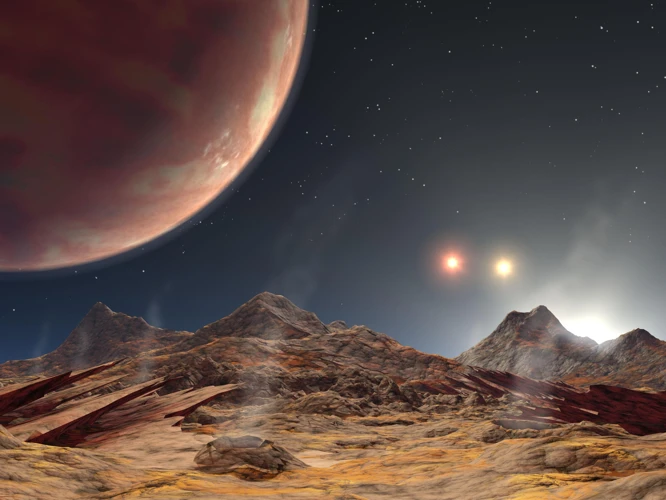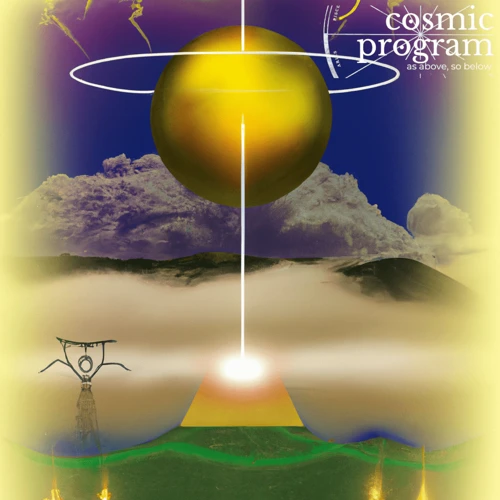Welcome to the fascinating realm of exoplanet habitability, where scientists delve into the mysteries of distant worlds and explore the potential for life beyond our solar system. Spanning across vast galaxies, exoplanets are celestial bodies orbiting stars other than our sun. The question of whether these exoplanets can support life has captivated both scientists and science fiction enthusiasts alike. In this article, we will explore the various factors that influence exoplanet habitability and shed light on the tantalizing possibilities of extraterrestrial life. Prepare to embark on a journey through the cosmos as we navigate the complexities of distance from parent stars, planetary atmospheres, surface temperatures, magnetic fields, and other crucial factors that influence the potential for life on these distant worlds.
Contents
- Factors Affecting Exoplanet Habitability
- Assessing Potential for Life
- Implications for Finding Life
- Conclusion
-
Frequently Asked Questions
- 1. How does the distance from the parent star affect exoplanet habitability?
- 2. What role does the type and stability of the star have in exoplanet habitability?
- 3. How does the composition of the planetary atmosphere affect exoplanet habitability?
- 4. Why is surface temperature important for exoplanet habitability?
- 5. What role does the presence of water play in exoplanet habitability?
- 6. How does the exoplanet’s magnetic field affect habitability?
- 7. What is the “Goldilocks Zone” and why is it important for habitability?
- 8. Why are the chemical ingredients for life important in exoplanet habitability?
- 9. How does an exoplanet’s ability to retain an atmosphere affect its potential for habitability?
- 10. What role does geological activity play in exoplanet habitability?
- References
-
Frequently Asked Questions
- 1. How does the distance from the parent star affect exoplanet habitability?
- 2. What role does the stellar type and stability play in exoplanet habitability?
- 3. How does the planetary atmosphere affect exoplanet habitability?
- 4. What is the significance of surface temperature and water for exoplanet habitability?
- 5. What role does a planet’s magnetic field play in exoplanet habitability?
- 6. What is the significance of the Goldilocks Zone in assessing potential for life?
- 7. How do chemical ingredients for life impact the potential for life on exoplanets?
- 8. Why is the ability to retain an atmosphere important for exoplanet habitability?
- 9. How does geological activity impact the potential for life on exoplanets?
- 10. What are the implications of finding habitable exoplanets for the search for life?
- Finding habitable exoplanets has profound implications for the search for life beyond Earth. It increases the possibility that life could exist elsewhere in the universe, and it expands our understanding of where life might thrive. These discoveries inspire new missions and further scientific research in the pursuit of answering the ultimate question: Are we alone?
- References
- Read More
Factors Affecting Exoplanet Habitability

When it comes to exoplanet habitability, several critical factors come into play. These factors encompass the distance from the parent star, the stability and type of the star itself, the composition of the planetary atmosphere, the surface temperature and the presence of water, as well as the existence of a magnetic field. The distance from the parent star determines the amount of energy received, with exoplanets orbiting within the “Goldilocks Zone” having the potential for liquid water and, therefore, life. The star’s stability and type play a significant role in ensuring a sufficient energy source for sustained habitability. The planetary atmosphere acts as a protective shield while also regulating temperature and facilitating essential chemical reactions. Surface temperature and the presence of water are crucial for maintaining a stable environment suitable for life as we know it. Additionally, a magnetic field shields against harmful radiation, protecting the atmosphere and any potential inhabitants. In assessing exoplanet habitability, each of these factors interplays to determine the potential for life to thrive beyond our own planet’s boundaries.
1. Distance from Parent Star
The distance from the parent star is a crucial factor when determining the potential habitability of an exoplanet. This distance affects the amount of energy received from the star, which in turn influences the exoplanet’s temperature and the existence of liquid water, a key ingredient for life as we know it. Exoplanets located too close to their parent star, in what is known as the inner region, experience extreme temperatures, causing any water to evaporate. These exoplanets may have a rocky and desolate surface. On the other hand, exoplanets located too far away, in the outer region, may be too cold for liquid water to exist, resulting in a frozen and inhospitable environment.
However, if an exoplanet falls within the habitable zone, also referred to as the “Goldilocks Zone,” it is situated at the right distance from the parent star to potentially support life. In this zone, the exoplanet receives an optimal amount of energy from the star, allowing for the possibility of liquid water on its surface. This optimal distance ensures that the temperature of the exoplanet is within a range suitable for the existence of liquid water, which in turn provides an environment conducive to the emergence and sustenance of life.
The habitability of an exoplanet can further be influenced by other factors related to its distance from the parent star. These factors include the exoplanet’s orbital period, which determines its year length, and the potential for tidal forces that could impact its geology and climate. The stability of the exoplanet’s orbit is also essential, as extreme eccentricities or close encounters with other celestial bodies could disrupt the conditions necessary for habitability.
The distance from the parent star plays a vital role in determining the habitability of an exoplanet. Exoplanets located within the habitable zone, at an optimal distance from their parent star, have the potential to support liquid water and, therefore, life. The intricate balance between proximity to the star and maintaining a stable environment paves the way for the exploration of potentially habitable exoplanets beyond our solar system.
2. Stellar Type and Stability
The type and stability of the parent star play a crucial role in determining the habitability of an exoplanet. There are various types of stars, such as main sequence stars (like our sun), red giants, white dwarfs, and even exotic ones like neutron stars. Each stellar type presents unique characteristics that can either enhance or hinder the potential for life on an orbiting exoplanet.
Stellar stability refers to how steady and predictable the star’s behavior is over time. A stable star is essential for providing a consistent energy source to its surrounding planets. Fluctuations in a star’s brightness or energy output can have significant impacts on the climate and conditions of an exoplanet. For instance, a highly unstable star might experience severe flares or bursts of radiation that could strip away an exoplanet’s atmosphere or make its surface uninhabitable.
The size and mass of a star also affect habitability. Smaller stars, like red dwarfs, are more common in the universe. They have lower mass, longer lifetimes, and emit less energy compared to larger stars. Although red dwarfs are less luminous, their habitable zones are closer to the star, making it possible for exoplanets within this range to support liquid water. However, there are challenges associated with red dwarf systems, such as tidal locking, where one side of an exoplanet constantly faces the star, potentially creating extreme temperature variations.
On the other hand, larger stars have shorter lifespans and can be more volatile. They emit higher levels of radiation, which can be detrimental to the stability of an exoplanet’s atmosphere. However, some larger stars might host exoplanets with thick atmospheres that could provide protection from harmful radiation.
Understanding the stellar type and stability is crucial in assessing exoplanet habitability. Scientists study various factors, including stellar mass, temperature, and activity, to determine the potential suitability of an exoplanet for life. By considering these aspects, researchers can narrow down the search for potentially habitable exoplanets within the vastness of the cosmos.
3. Planetary Atmosphere
The composition and characteristics of a planetary atmosphere play a crucial role in determining its habitability. The atmosphere creates a protective layer around the exoplanet, shielding it from harmful solar radiation, meteor impacts, and regulating temperature. The presence of gases such as carbon dioxide, water vapor, and methane can contribute to the greenhouse effect, trapping heat and maintaining a stable temperature range. This is essential for the existence of liquid water, a key ingredient for life as we know it. The atmosphere facilitates important chemical reactions that are necessary for supporting life. For example, the presence of oxygen in the atmosphere is a strong indicator of biological activity, as it is produced by photosynthetic organisms. On the other hand, the absence or low levels of certain gases, such as ozone, can leave an exoplanet more vulnerable to harmful ultraviolet radiation. The composition and stability of the planetary atmosphere are therefore vital considerations when assessing the potential habitability of exoplanets. A well-balanced atmosphere with the right combination of gases can create the necessary conditions for life to arise and thrive. For further exploration into ancient symbols and their meanings, you can delve into the rich tapestry of Mesopotamian mythology.
4. Surface Temperature and Water
Surface temperature and the presence of water are crucial factors in determining the potential habitability of an exoplanet.
Surface Temperature: The surface temperature of an exoplanet plays a vital role in determining whether liquid water can exist. Water is essential for life as we know it, and for it to exist in a liquid state, the planet’s temperature must be within a certain range. If the surface temperature is too low, water will freeze, making it difficult for life to survive. Conversely, if the temperature is too high, water will vaporize, leading to a dry, uninhabitable environment. The existence of a stable and moderate surface temperature is therefore necessary for the potential development and sustainability of life.
Water: Water is known as the “universal solvent” and is crucial for biochemical reactions necessary for life. It provides a medium for chemical reactions and serves as a solvent for various essential compounds. The presence of liquid water is closely linked to the potential for habitability because it is a fundamental requirement for life as we understand it. The availability of water, whether in the form of oceans, lakes, or even underground reservoirs, provides habitats for organisms to thrive. It also enables the transport of nutrients and facilitates the cycling of materials necessary for the sustenance of life. When determining the potential habitability of an exoplanet, the presence or potential presence of water is a crucial consideration.
The surface temperature and the presence of water are intimately tied to the habitability of an exoplanet. The existence of a stable and moderate surface temperature, as well as the availability of liquid water, greatly increase the likelihood of an exoplanet supporting life forms similar to those found on Earth.
5. Magnetic Field
The presence of a magnetic field is a critical factor in determining the potential habitability of an exoplanet. A magnetic field is generated by the movement of molten metal within a planet’s core. This magnetic field acts as a protective shield, deflecting harmful solar radiation and preventing it from stripping away the planet’s atmosphere. Without a robust magnetic field, an exoplanet would be vulnerable to the harsh effects of stellar radiation, making it inhospitable for life as we know it to exist.
Magnetic fields play a vital role in preserving the atmosphere of a planet. When a planet has a strong magnetic field, it can trap and retain the essential gases that make up the atmosphere. This is particularly important for planets that orbit close to their parent stars, where the intense radiation and solar winds can strip away atmospheric gases over time. A strong magnetic field acts as a protective barrier, preventing the loss of these gases and maintaining the stability of the atmosphere.
A magnetic field interacts with the stellar wind, which is a stream of charged particles emanating from the parent star. This interaction forms a region called the magnetosphere around the planet. The magnetosphere serves as an additional layer of protection against harmful particles, allowing the planet’s atmosphere to remain intact and providing a conducive environment for life to thrive.
It is worth noting that not all exoplanets have measurable magnetic fields. The presence and strength of a magnetic field depend on various factors, such as the planet’s size, composition, and its internal dynamics. Scientists study these characteristics to gain a better understanding of a planet’s magnetic field and its potential habitability.
A magnetic field is an essential factor in exoplanet habitability. It shields the planet from harmful solar radiation and prevents the loss of atmosphere. The presence of a strong magnetic field increases the chances of an exoplanet being capable of supporting life. Further exploration and research into the magnetic fields of exoplanets will continue to provide valuable insights into their habitability potential and the mysteries of the universe.
Assessing Potential for Life

Assessing the potential for life on exoplanets involves considering various key factors. One crucial aspect is the concept of the “Goldilocks Zone,” where a planet orbits its star at a distance that allows for the presence of liquid water. The availability of chemical ingredients necessary for life, such as carbon, hydrogen, oxygen, and nitrogen, also plays a vital role. Another critical factor is the planet’s ability to retain its atmosphere, which is necessary to maintain stable conditions for life to thrive. Additionally, the presence of geological activity, like tectonic plate movement or volcanic eruptions, can contribute to the creation of diverse habitats and the recycling of nutrients. By evaluating these parameters, scientists can better understand the potential habitability of exoplanets and the likelihood of finding life beyond our own planet. It’s an exhilarating frontier of exploration that takes us far beyond the realms of ancient mythologies or agricultural practices of civilizations like the Ancient Greeks or the Aztecs.
1. The Goldilocks Zone
The Goldilocks Zone, also known as the habitable zone, is a crucial concept in assessing the potential for life on exoplanets. This zone refers to the region around a star where conditions are just right for liquid water to exist on a planet’s surface. Too close to the parent star, and the planet becomes too hot, causing water to evaporate. Too far, and the planet becomes too cold, resulting in water freezing into ice. In this delicate balance, a planet within the Goldilocks Zone has the potential for stability and the presence of liquid water, a fundamental requirement for life as we know it. The specific boundaries of the Goldilocks Zone depend on the star’s size, temperature, and energy output. Stars similar to our own Sun have a narrower habitable zone compared to smaller cooler stars, while larger hotter stars have wider habitable zones. Assessing a planet’s position within the Goldilocks Zone provides valuable insight into its potential habitability, as it establishes the right temperature range for the existence of liquid water, a fundamental ingredient for life to flourish.
2. Chemical Ingredients for Life
One of the key aspects in assessing the potential for life on exoplanets is the presence of chemical ingredients necessary for life as we know it. Carbon, hydrogen, oxygen, nitrogen, and phosphorus are among the fundamental elements required for the formation of organic molecules essential for life. These elements are commonly found throughout the universe and are abundant in our own solar system. The existence of these elements in suitable quantities on an exoplanet increases the likelihood of supporting life. Scientists also look for the presence of molecules such as water, which is crucial for the development and sustenance of life forms. Additionally, the presence of other organic compounds like amino acids, nucleotides, and lipids could indicate the potential for more complex forms of life. Analyzing the chemical composition of exoplanets provides insights into their capacity to support life as we understand it. While we are still unraveling the mysteries of the universe, understanding the chemical ingredients needed for life offers a promising path toward identifying habitable exoplanets and potentially discovering life beyond our own planet’s boundaries.
3. Ability to Retain Atmosphere
The ability of an exoplanet to retain its atmosphere is a critical factor in determining its habitability. An atmosphere serves as a protective barrier, shielding the planet’s surface from harmful solar radiation and regulating temperature. The retention of an atmosphere depends on various factors, such as the planet’s mass, temperature, and the composition of its atmosphere itself.
The escape of gases from an exoplanet’s atmosphere can occur through processes like thermal escape, where high-energy particles in the atmosphere gain enough energy to escape the planet’s gravitational pull. Another process is called sputtering, which happens when particles in the atmosphere are stripped away by high-energy particles, such as those from the star’s solar wind. Additionally, the strength of the exoplanet’s magnetic field plays a crucial role in protecting the atmosphere from erosion by the star’s wind and radiation.
The ability of an exoplanet to retain its atmosphere is also influenced by its proximity to the parent star. Exoplanets orbiting too close to their star may experience extreme heating, leading to the loss of their atmospheres. On the other hand, exoplanets that are too far from the star may have their atmospheres freeze and subsequently dissipate.
Understanding an exoplanet’s ability to retain its atmosphere provides valuable insights into the potential for habitability. A stable and well-regulated atmosphere creates a suitable environment for the presence of liquid water and the development of life as we know it. This factor, together with others such as distance from the parent star, planetary atmosphere, surface temperature, and the presence of water, forms the intricate puzzle scientists strive to solve in the quest for identifying habitable exoplanets.
4. Geological Activity
Geological activity on an exoplanet plays a crucial role in determining its potential for habitability. The presence of geological processes, such as tectonic activity and volcanism, has significant implications for the planet’s overall environment. Tectonic activity, driven by the movement of crustal plates, can create a variety of geological features, including mountains, valleys, and ocean basins. These features contribute to the distribution of landmasses and the formation of different climate zones, which, in turn, affect the availability of diverse habitats. Volcanism, another form of geological activity, is responsible for releasing gases and minerals into the atmosphere. This process can influence the composition of the atmosphere, affecting temperature regulation and the availability of essential elements for life.
Geological activity can impact the planet’s stability and resilience. Plate tectonics, for example, helps maintain a stable climate by cycling carbon dioxide through the process of weathering. This regulation of greenhouse gases is crucial for preventing temperature extremes that could otherwise inhibit the development and sustenance of life. Volcanic activity can contribute to the replenishment of nutrients in the soil and oceans, providing necessary elements for the growth of organisms.
Studying geological activity on exoplanets can be challenging since it requires a combination of remote sensing techniques and theoretical models. However, it is an essential factor to consider in the search for habitable worlds beyond our solar system. Understanding the geological history and current activity of exoplanets can provide valuable insights into their potential to support life as we know it. By investigating geological activity, scientists inch closer to unraveling the mysteries of the cosmos and uncovering potential havens for life in the vastness of the universe.
Implications for Finding Life

The implications for finding life in the vast expanse of the universe are profound. Discovering extraterrestrial life would revolutionize our understanding of our place in the cosmos and challenge our preconceived notions about the uniqueness of life on Earth. It would provide valuable insights into the fundamental questions of our existence and the possibility of life’s ubiquity. Not only would it expand the boundaries of scientific knowledge, but it could also have far-reaching philosophical, societal, and theological implications. The discovery of life beyond Earth would ignite a renewed sense of wonder and curiosity, fueling scientific advancements and inspiring future generations. It would open up exciting avenues for interstellar exploration and potentially pave the way for interstellar colonization. It would foster a greater appreciation for the delicate balance and interconnectedness of life on our own planet. As we continue to search for signs of life in the cosmos, we must remain open-minded and adaptable, prepared to challenge our assumptions and embrace the unexpected. Only time will reveal the truths hidden within the vast expanse of the universe.
Conclusion

The search for exoplanet habitability has deepened our understanding of the vast universe and the potential for life beyond our planet. Through the exploration of factors such as distance from parent stars, planetary atmospheres, surface temperature, and the presence of water, we have gained insights into the conditions necessary for life to flourish. The concept of the “Goldilocks Zone,” where a planet is neither too hot nor too cold, has provided a framework for identifying potentially habitable exoplanets. Additionally, the study of chemical ingredients for life and the ability to retain atmospheres have expanded our knowledge of the possibilities for extraterrestrial life. Geological activity has also emerged as a crucial factor, as it can influence the availability of essential resources and contribute to the overall stability of a planet. However, while these factors contribute to exoplanet habitability, the search for life beyond Earth remains an ongoing endeavor. As technology advances and our understanding grows, new discoveries await us in the vast expanse of the cosmos. With each new exoplanet discovered, we come one step closer to unravelling the mysteries of the universe and potentially finding signs of life elsewhere. So let us continue to explore, imagine, and wonder at the possibilities that lie beyond our own planet.
Frequently Asked Questions

1. How does the distance from the parent star affect exoplanet habitability?
The distance from the parent star plays a crucial role in determining the temperature range on an exoplanet. If it’s too close, the planet becomes too hot, causing water to evaporate. If it’s too far, the planet becomes too cold, leading to freezing conditions. The ideal distance is within the “Goldilocks Zone,” where liquid water can exist, making it more likely for life to thrive.
2. What role does the type and stability of the star have in exoplanet habitability?
The type and stability of the star impact the amount and type of energy the exoplanet receives. A stable star provides a consistent energy source over long periods, crucial for sustaining habitable conditions. Additionally, the star’s type influences the intensity and spectrum of radiation, which can significantly affect the atmosphere of the exoplanet.
3. How does the composition of the planetary atmosphere affect exoplanet habitability?
The planetary atmosphere acts as a protective shield, regulating temperature and allowing for essential chemical reactions. The presence of greenhouse gases like carbon dioxide can help trap heat and maintain a stable temperature range. Conversely, an excessive amount of greenhouse gases can lead to a runaway greenhouse effect, making the planet too hot for life.
4. Why is surface temperature important for exoplanet habitability?
The surface temperature is crucial because it affects the potential for liquid water, a key ingredient for life as we know it. If the temperature is too high, water evaporates, while if it’s too low, water freezes. An optimal range allows for the existence of liquid water, creating favorable conditions for life to thrive.
5. What role does the presence of water play in exoplanet habitability?
Water is essential for life as we know it. It provides a solvent for biochemical reactions and acts as a medium for transporting nutrients. The presence of liquid water on an exoplanet increases the likelihood of habitability, as it creates a suitable environment for the emergence and evolution of life forms.
6. How does the exoplanet’s magnetic field affect habitability?
An exoplanet’s magnetic field helps protect its atmosphere from being eroded by high-energy particles from the star. It acts as a shield, deflecting harmful radiation and preventing it from stripping away the atmosphere and any potential life-supporting conditions on the planet’s surface.
7. What is the “Goldilocks Zone” and why is it important for habitability?
The “Goldilocks Zone,” also known as the habitable zone, refers to the region around a star where the conditions are just right for liquid water to exist on the surface of an exoplanet. It is important because liquid water is a key prerequisite for life as we know it, making the chances of finding habitable environments higher within this zone.
8. Why are the chemical ingredients for life important in exoplanet habitability?
Chemical ingredients, such as carbon, nitrogen, oxygen, and other essential elements, are necessary building blocks for life as we understand it. The presence of these elements, along with the potential for organic molecules, increases the likelihood of the emergence of complex, biochemically active systems on an exoplanet.
9. How does an exoplanet’s ability to retain an atmosphere affect its potential for habitability?
The ability to retain an atmosphere is critical for habitability. An exoplanet needs a sufficient gravitational pull to hold its atmosphere, as well as protection from stellar winds and other factors that could strip away the gases required to maintain a stable environment. Without an atmosphere, conditions necessary for life become challenging to sustain.
10. What role does geological activity play in exoplanet habitability?
Geological activity, such as volcanic eruptions and tectonic plate movements, is crucial for habitability. It helps regulate the planet’s temperature, allows for the recycling of nutrients, and can contribute to the release of gases that maintain the atmosphere. Without geological activity, an exoplanet may lack the necessary conditions to support life in the long term.
References
Frequently Asked Questions

1. How does the distance from the parent star affect exoplanet habitability?
The distance from the parent star is crucial for a planet’s habitability. If a planet is too close to its star, it becomes too hot and any water on its surface evaporates. On the other hand, if a planet is too far from its star, it becomes too cold and the water freezes. The habitable zone, also known as the Goldilocks Zone, is the region around a star where conditions are just right for liquid water to exist.
2. What role does the stellar type and stability play in exoplanet habitability?
The stellar type and stability of a star are important factors in determining exoplanet habitability. Stars that are stable and not prone to violent eruptions or flares are more likely to support habitable planets. Additionally, certain types of stars, such as red dwarfs, are known to have longer lifespans and are more common in the universe, increasing the chances of finding habitable exoplanets.
3. How does the planetary atmosphere affect exoplanet habitability?
The planetary atmosphere is crucial for maintaining habitable conditions on an exoplanet. A thick atmosphere can help trap heat, regulate temperature, and protect the planet from harmful radiation. It also plays a role in the greenhouse effect, where gases in the atmosphere trap and retain heat, making the planet warmer. The composition of the atmosphere, including the presence of greenhouse gases like carbon dioxide, also affects the potential for life.
4. What is the significance of surface temperature and water for exoplanet habitability?
Surface temperature and the presence of water are key factors in determining exoplanet habitability. Water is essential for life as we know it, and the existence of liquid water on a planet’s surface increases the likelihood of habitability. Surface temperature needs to be within a certain range to maintain liquid water, with extremes in temperature making it difficult for life to thrive.
5. What role does a planet’s magnetic field play in exoplanet habitability?
A planet’s magnetic field is crucial for protecting it from harmful solar radiation. Earth’s magnetic field, for example, deflects charged particles from the Sun, preventing them from stripping away our atmosphere and damaging life on the planet’s surface. Without a strong magnetic field, an exoplanet may be more susceptible to radiation, making it less habitable.
6. What is the significance of the Goldilocks Zone in assessing potential for life?
The Goldilocks Zone, also known as the habitable zone, is the region around a star where conditions are just right for liquid water to exist on a planet’s surface. This zone is of great importance in assessing the potential for life, as water is a key ingredient for life as we know it. Planets within the Goldilocks Zone have the best chance of supporting habitable environments.
7. How do chemical ingredients for life impact the potential for life on exoplanets?
Chemical ingredients for life, such as carbon, hydrogen, nitrogen, and oxygen, are essential building blocks for life as we know it. The presence of these elements, along with other organic molecules, increases the potential for life on exoplanets. Scientists search for these ingredients when studying exoplanets to determine their habitability.
8. Why is the ability to retain an atmosphere important for exoplanet habitability?
The ability to retain an atmosphere is crucial for exoplanet habitability. An atmosphere helps regulate temperature, provides protection from harmful radiation, and contains gases necessary for life. If an exoplanet is unable to maintain its atmosphere due to, for example, a weak magnetic field or strong solar wind, it becomes less likely to support life.
9. How does geological activity impact the potential for life on exoplanets?
Geological activity, such as volcanic eruptions and tectonic plate movements, can have a significant impact on the potential for life on exoplanets. Volcanic activity can release gases necessary for life into the atmosphere, while tectonic plate movements can create dynamic environments that support diverse ecosystems. The presence of geological activity indicates a planet’s potential for habitability.







